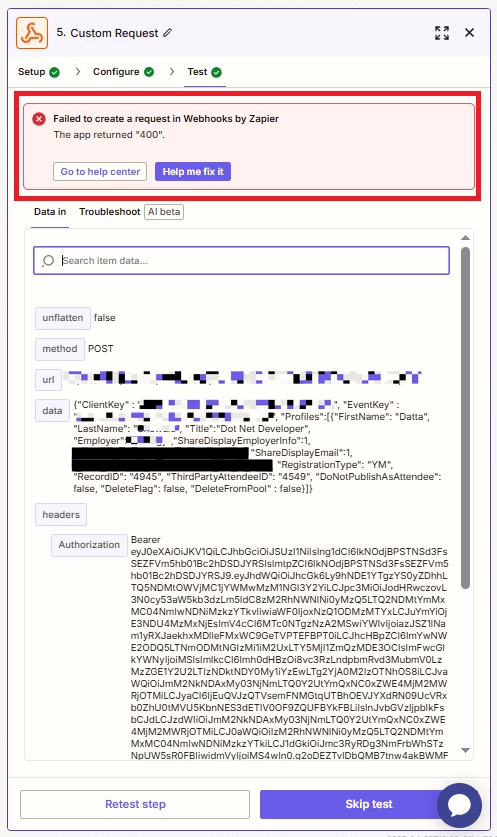When I pass Content-Type through Header in Custom Request the error I get is
Failed to create a request in Webhooks by Zapier
The app returned "400".
If I don’t pass the Content-Type my API gets failed as it is not able to reserialize the data sent to a object.








